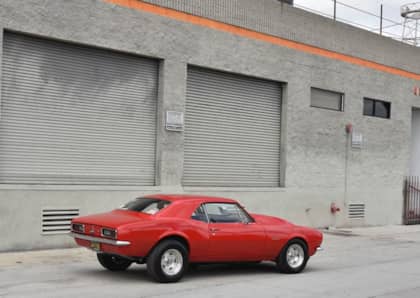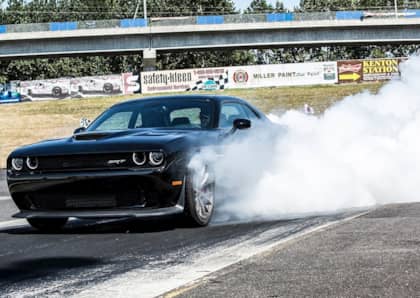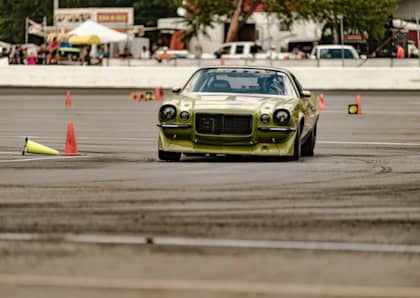Top Stock Drag Cars of Today and Tomorrow
As we made our way through the massive crowds at SEMA 2018, we arrived at the Chevrolet booth to look at the 50th anniversary 2019 COPO Camaro. Of course, it’s awesome to have the opportunity to see this type of vehicle up-close and in person, but what really shocked us was their concept stock drag racer: the Camaro eCOPO. As the name suggests, it’s all electric. Is this the future of drag racing? Our curiosity was piqued, so we did some research to see how it compares to the current track-only cars that are geared specifically for drag racing from Ford, Chevy and Dodge. Each brand offers a version of their stock drag car with a similar NHRA approved twin-screw supercharger, three-speed transmission, nine-inch rear axle, roll cage and hefty price tag.
Ford Mustang Cobra Jet
Ford calls this the fastest, most powerful factory drag Mustang they’ve ever built. This track-only vehicle is equipped a race-ready 5.2L version of the Coyote V8 and force-fed air with a 3.0L Whipple supercharger.
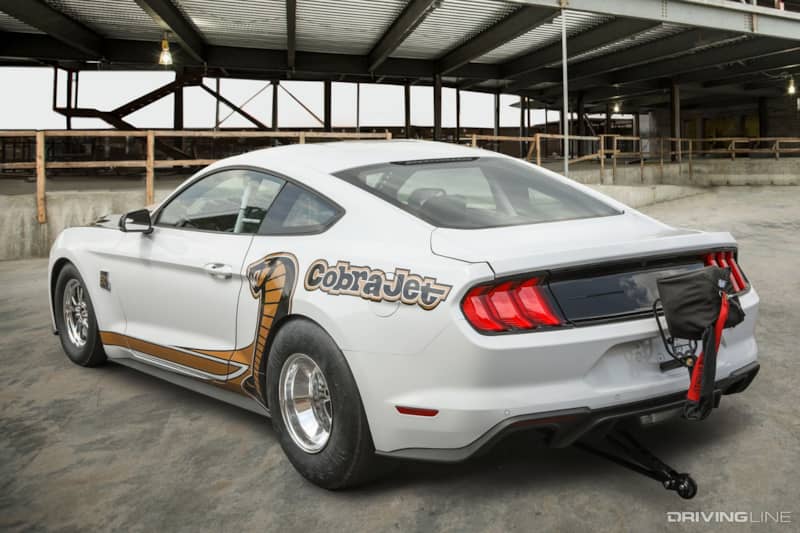
They claim quarter-mile E.T. is in the eight-second range with 150 mph trap speeds—and we believe them.
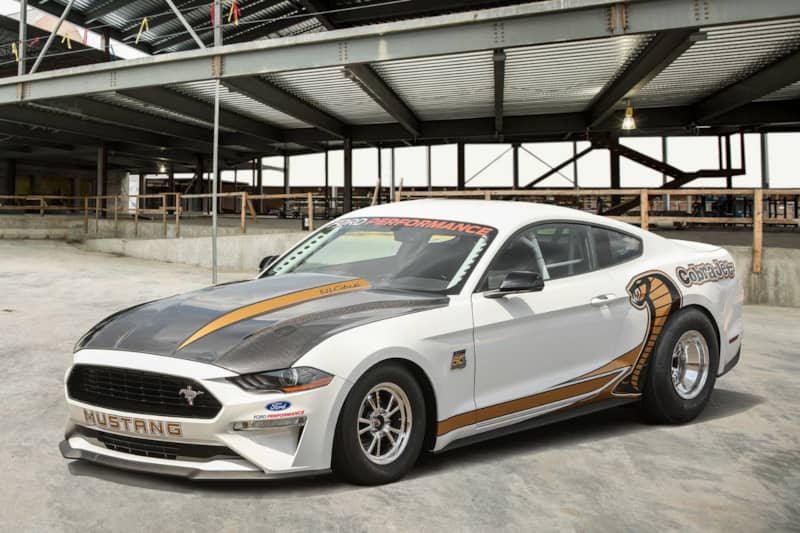
It features throwback graphics and an appearance that isn’t much different than the street-legal version. But with that badging, there’s no question it’s hiding go-fast goodies underneath the façade. 2018 marks the 50th anniversary of the Cobra Jet and in honor of its 1968 debut, only 68 were built and carry an MSRP of $130,000.
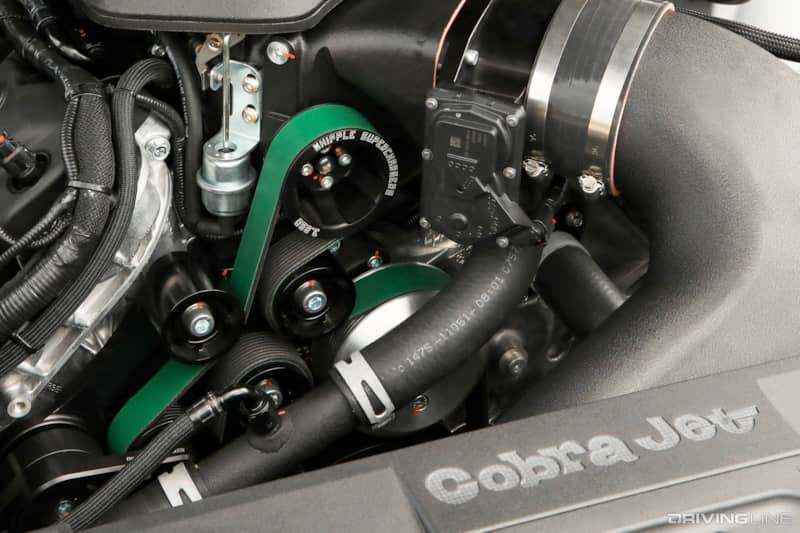
Chevy Camaro COPO
First off, COPO stands for Central Office Production Order system. This name is drawn from the legacy established in 1969 when Chevrolet dealers used the system to build high-performance models like the first purpose-built Camaro drag racing specialty car.
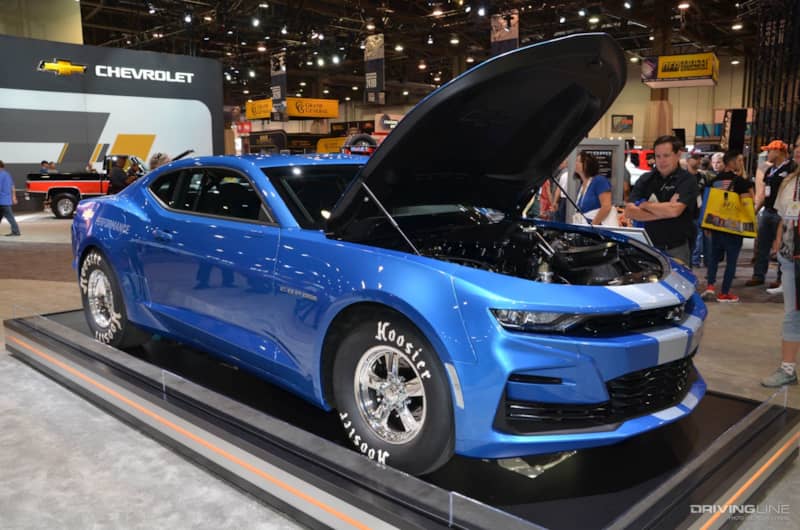
2019 is the 50th anniversary of the COPO Camaro, and Chevy is making 69 of them to honor the race-ready model that are specifically designed for NHRA’s Stock eliminator classes.
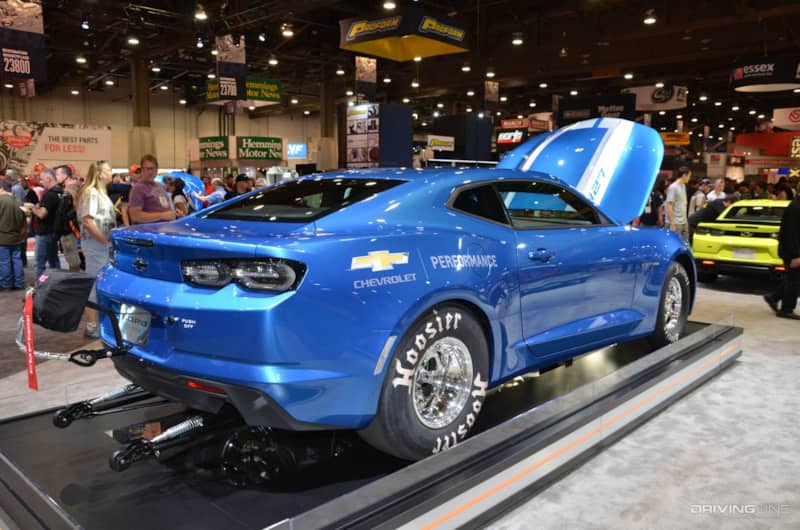
Three engine choices are available for those lucky 69 people. One Magnuson 2.65L supercharged LSX-based 350ci, and two naturally aspirated versions: a 427ci and a high-revving LT-based 302ci. We didn’t find any official prices, but you can expect them to be within the realms of the comparable Ford and Mopar models.
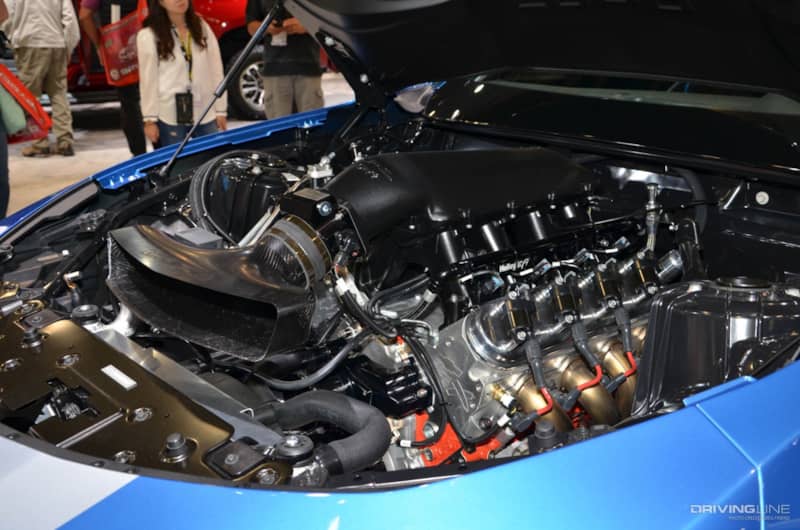
Dodge Challenger Drag Pak
The Drag Pak is designed for racers in the Sportsman class who compete in nationally sanctioned drag racing series. “This generation Drag Pak combines the latest in Sportsman racing technology a host of upgrades and improvements from the previous generation with unique heritage cues,” according to Dodge’s official press release. They’re not joking, as the car runs consistent eight-second-range passes in the quarter-mile and looks great doing it.
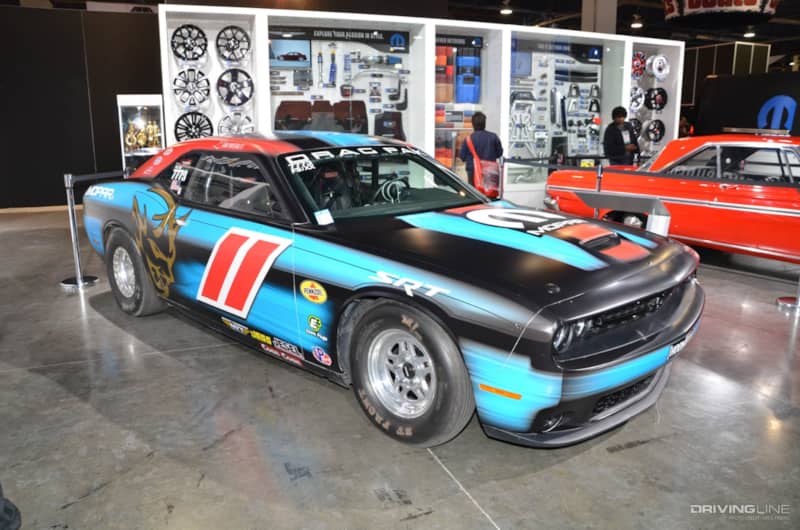
One of the more exciting aspects of the car are the engine options, of which there are two. This version of the Drag Pak is the first time Dodge has offered a 2.9L Whipple supercharged version, and it sits atop a 354ci Gen HEMI. Of course, the naturally-aspirated motor option is a 426ci HEMI.
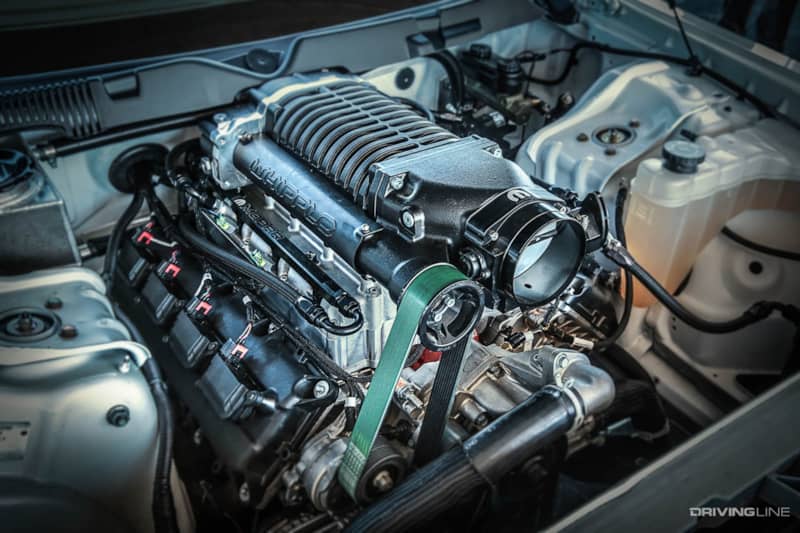
There were only 60 units made: 35 with the supercharged 354ci and 25 with the naturally-aspirated 426ci. They also got a little cute with the pricing which they call “cubic-inch appropriate”: $99,426 for the 426ci and $109,354 for the supercharged 354ci version.
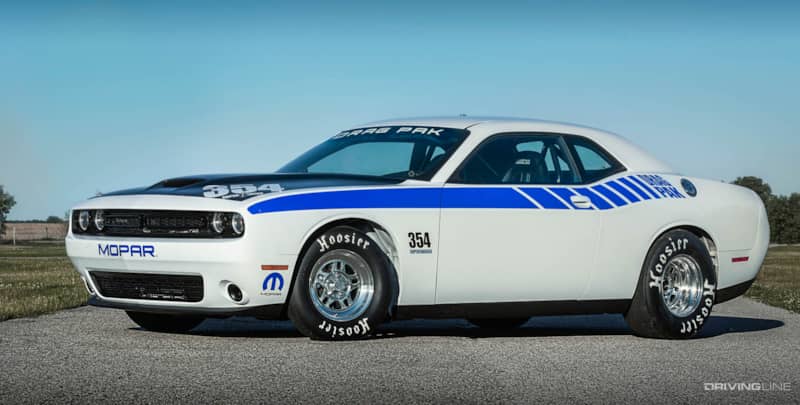
The Future of Drag Racing: Chevy eCOPO Camaro
The eCOPO Camaro makes more than 700hp and 600lb-ft of torque—yet produces zero emissions. Projected quarter-mile times are estimated to be in the nine-second range.
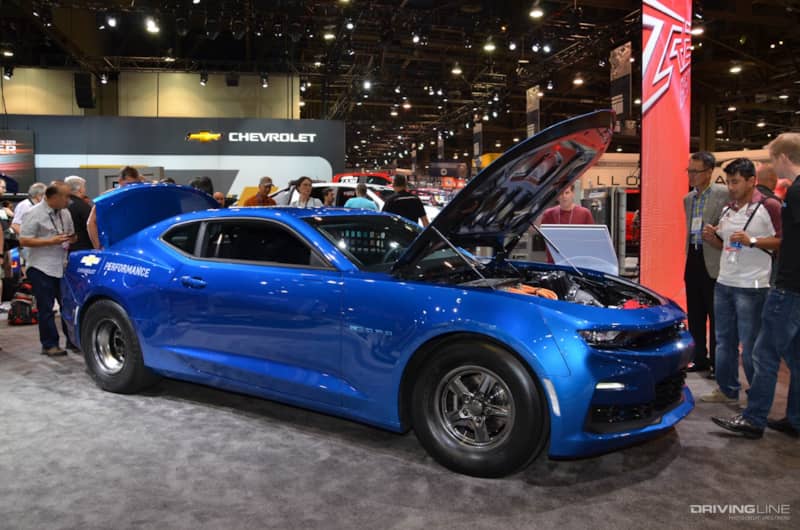
So how does it do it? General Motors built the car with Hancock and Lane Racing and utilizes two BorgWarner HVH 250-150 motor assemblies that completely replace the gas engine. The BorgWarner motors are supplied with GM’s first 800-volt battery pack that enable more efficient power transfer to the motor and supports faster recharging. But they’re not telling us how fast it recharges, so we suspect that it’s considerably longer than it takes to refuel a gas-powered dragster.
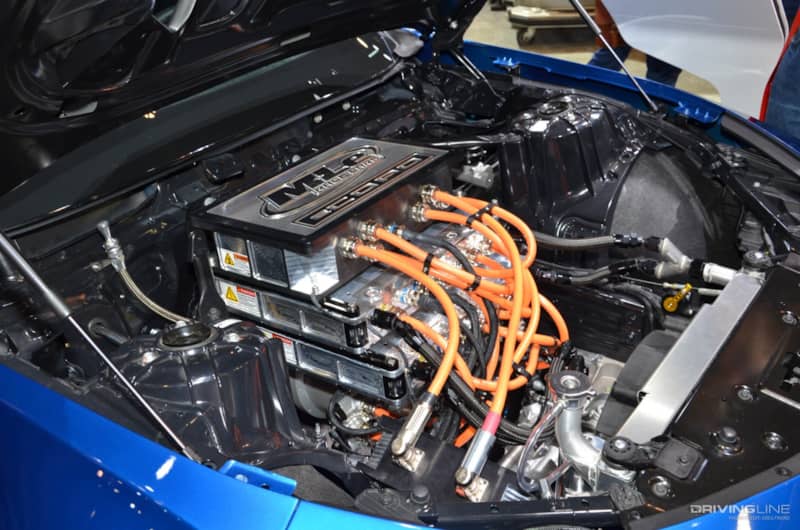
Surprisingly, power is delivered to the ground from the motors through a conventional race-prepped Turbo 400 automatic trans and the same solid rear axle nine-inch used in the production COPO Camaros.
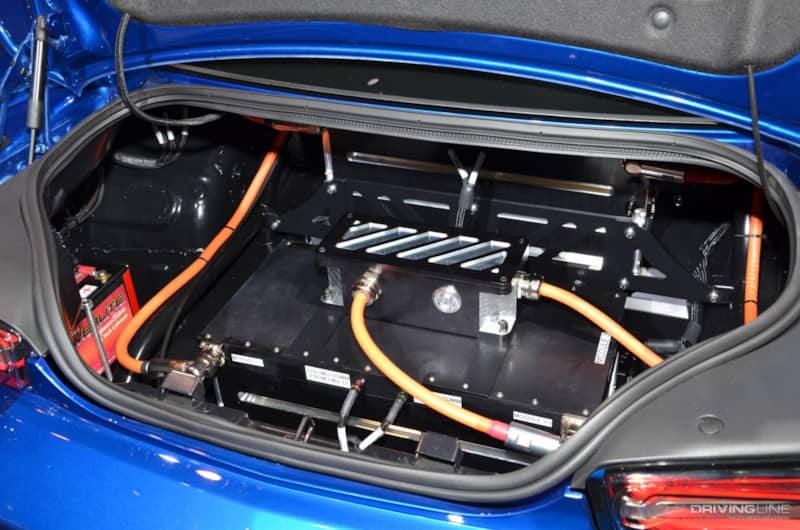
Clearly, we’re not far away from seeing something like this in competition given the numbers the eCOPO appears to be capable of. We’d guess that within the next ten years we’ll see all-electric classes emerge. But in order for that to happen, the charge time has to be reduced, parts need to be plentiful and the power delivery has to be comparable.
We're going to miss the sounds and smells of combustion-based drag racing.





